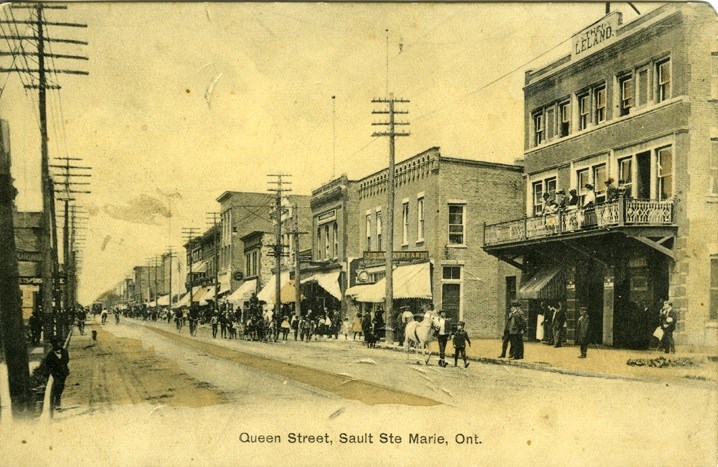From the archives of the Sault Ste. Marie Public Library:
With the recent media coverage given to opioid usage often resulting in overdoses and deaths, people’s attention has turned to the effects of these drugs on an individual and a societal scale.
However, while the focus on synthetic drugs like fentanyl may be relatively recent, narcotics have been in Sault Ste. Marie for much longer.
In 1912, Sault Police made the headlines when they raided a local opium den, located behind a tobacco store on Queen Street between Spring and Brock.
Opium is one of the world’s oldest recorded drugs, with its use tracing back to ancient Mesopotamia in 3,400 BC. From there, opium use spread around the world, notably to East Asia via the Silk Road. With the gold rush and work on the railway came an influx of immigrants from China to North America. These new immigrants brought opium with them and, in the mid-1800s, opened opium dens: establishments where people could purchase and consume the drug.
The raid on the local opium den, carried out by four members of the force including Chief of Police Vincent, Plainclothes Officer Fortune and Constables Harbottle and King resulted in six arrests. Among those arrested was the alleged proprietor of the den, Hong Tong, along with four other men of Chinese descent. Police confiscated opium, pipes, and lamps – and items associated with gambling, such as playing cards and dice. Despite this, the owner continued to maintain that it was a tea shop.
Also arrested – and the focus of much speculation – was a 30-year-old white woman from Sault, Michigan. She provided police with two stories. First, she claimed she went into the shop for some tea, saw a policeman, and “hurried into a secluded room.” She also claimed that Hong Tong had “enticed” her into the opium den. Police opted to believe the latter explanation.
The alleged opium den was one of several suspected to be operating in the city. In the Sault Star, police seemed confident that they would “stamp out the evils” that opium dens contained.
While those arrests may have marked the end of one opium den, narcotics still proved to be an issue in the area – not just in regards to consumption but smuggling as well.
In 1928, news broke of what the Sault Star referred to as a “giant opium smuggling ring” that had its base in Sault, Ontario.
The narcotics division in Sault, Mich. arrested two Americans, a laundryman and a barber, on the suspicion that they were involved in smuggling dope. Authorities also seized a quantity of opium with a value of $10,000 – which, taking into account inflation, would be the equivalent to over $145,000 today. Also seized were scales, lamps, pipes, and other paraphernalia.
Police felt that the opium had come from China by way of the Ontario Sault but they were unable to uncover how exactly it had gotten across the river. They expected more arrests to follow as they cracked down on trafficking of “the poppy poison.”
And arrests did follow, most notably a veterinary surgeon from Bruce Street by the name of Dr. A. A. Moody.
Moody had worked as a vet locally for 17 years, and was well-known for both his veterinary practice and for the racing horses he owned. When he left the house, he told his wife that he was making a call, and he brought his horse and buggy with him, along with his dog. His dog returned home; he did not.
Moody was not making a veterinary call at all. He was caught crossing the river from Ontario to Michigan as part of a sting operation.
Police on both sides of the river had long suspected that he had been involved in trafficking drugs, and they decided to put a plan into action to catch him. He had been contacted earlier that day by officers posing as friends of the barber, who had recently been arrested; the officers requested to purchase $30 worth of morphine, then arranged for pickup to happen in Sault, Mich.
Authorities were waiting to arrest Moody at the ferry dock, just after he crossed the river. He had 150 morphine tablets hidden in one of his buggy’s cushions.
Not wanting him to have contact with the other prisoners, the police detained Moody in the women’s detention room. While there overnight, Moody committed suicide, hanging himself from a pipe in the ceiling.
The officer who placed the call pretending to purchase drugs had this to say as viewing the body: “I guess I was responsible for this . . . but I can’t say I am sorry.”
We may no longer see people smuggling drugs internationally via horse and buggy, however narcotics are still a concern in the city a century later – and often, still, with tragic consequences.
Each week, the Sault Ste. Marie Public Library and its Archives provides SooToday readers with a glimpse of the city’s past.
Find out more of what the Public Library has to offer at www.ssmpl.ca and look for more Remember This? columns here
